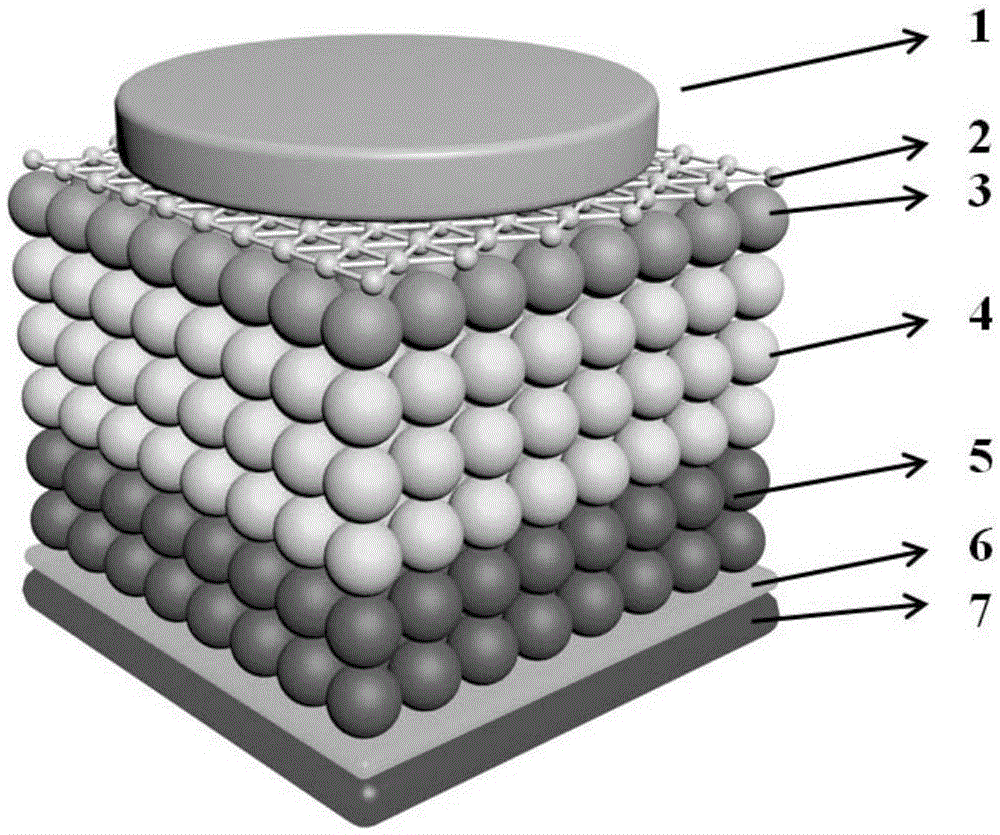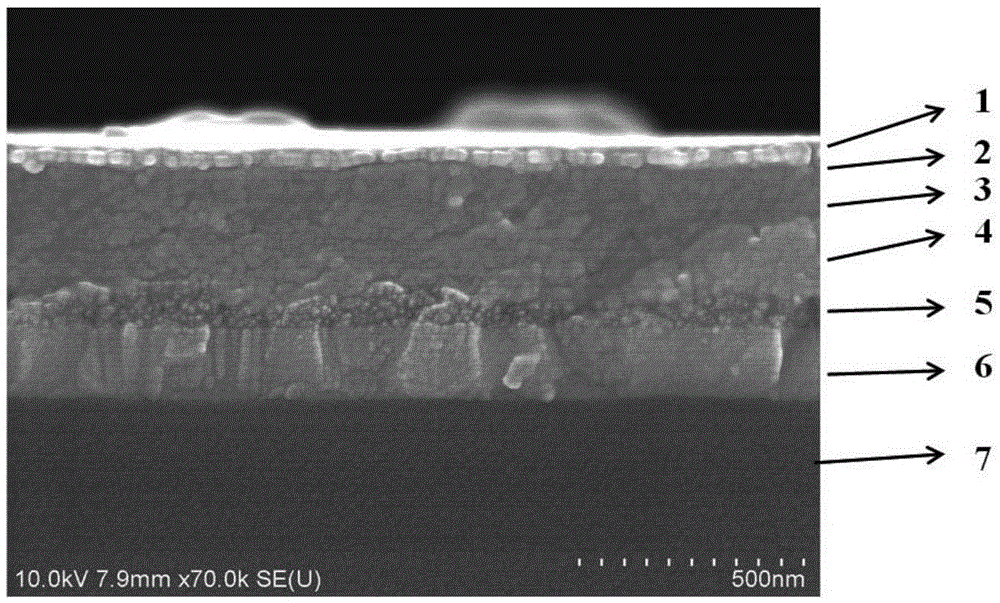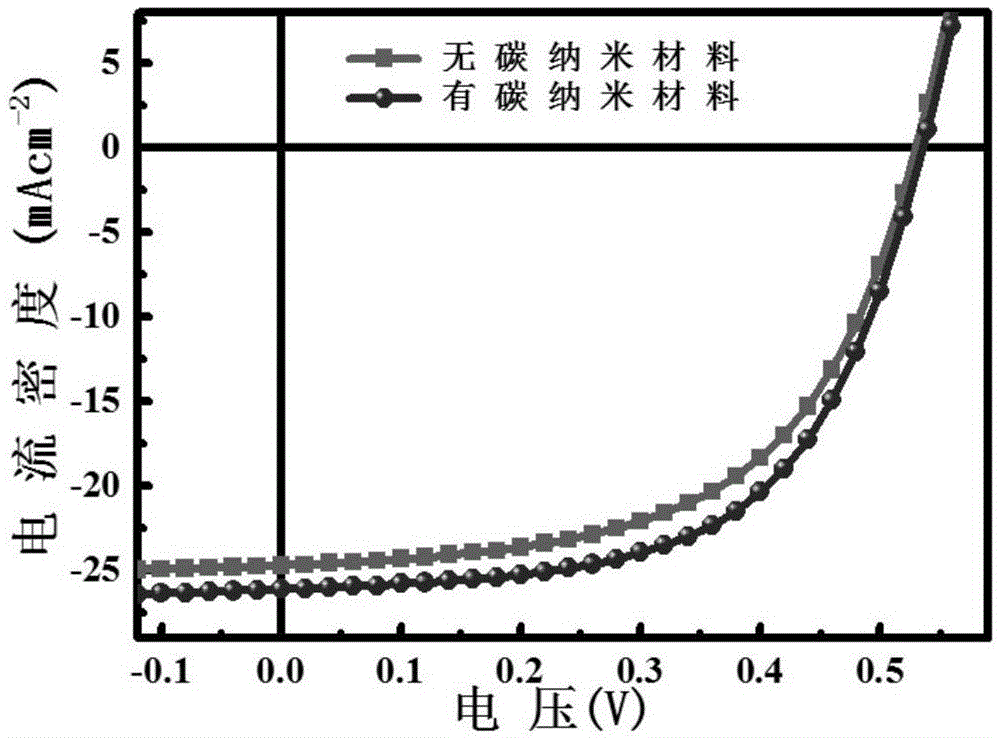Application of carbon nanomaterials as cathode buffer layer in lead sulfide quantum dot solar cell
A technology for a solar cell and a cathode buffer layer, applied in the field of materials, can solve the problems of high energy consumption of solar cells, inability to greatly improve, and low photoelectric conversion efficiency.
- Summary
- Abstract
- Description
- Claims
- Application Information
AI Technical Summary
Problems solved by technology
Method used
Image
Examples
Embodiment 1
[0056] 1) The substrate 7 is pretreated as follows: the glass substrate 7 is washed with deionized water, acetone and isopropanol successively, and then dried.
[0057] 2) if figure 1 As shown, a transparent conductive electrode 6 with a thickness of 150 nm is magnetron sputtered on a substrate 7 .
[0058] 3) Prepare zinc oxide quantum dot layer 5, lead sulfide (comprising PbS-TBAI layer 4 and PbS-EDT layer 3) and carbon nanomaterial layer 2 three kinds of active layers on the substrate with transparent conductive electrode obtained in step 2);
[0059] The specific steps include: dissolving zinc oxide quantum dots with a particle size of 5nm in chlorobenzene to obtain a solution with a concentration of 50mg / ml, spin coating at 1000rpm for 60s, and annealing the substrate at 100°C for 10min to obtain a zinc oxide quantum dot layer with a thickness of 50nm 5;
[0060]Dissolve lead sulfide quantum dots with a particle size of 5nm on it in octane to obtain a solution with a co...
PUM
| Property | Measurement | Unit |
|---|---|---|
| Particle size | aaaaa | aaaaa |
| Thickness | aaaaa | aaaaa |
| Thickness | aaaaa | aaaaa |
Abstract
Description
Claims
Application Information
 Login to View More
Login to View More - R&D
- Intellectual Property
- Life Sciences
- Materials
- Tech Scout
- Unparalleled Data Quality
- Higher Quality Content
- 60% Fewer Hallucinations
Browse by: Latest US Patents, China's latest patents, Technical Efficacy Thesaurus, Application Domain, Technology Topic, Popular Technical Reports.
© 2025 PatSnap. All rights reserved.Legal|Privacy policy|Modern Slavery Act Transparency Statement|Sitemap|About US| Contact US: help@patsnap.com



